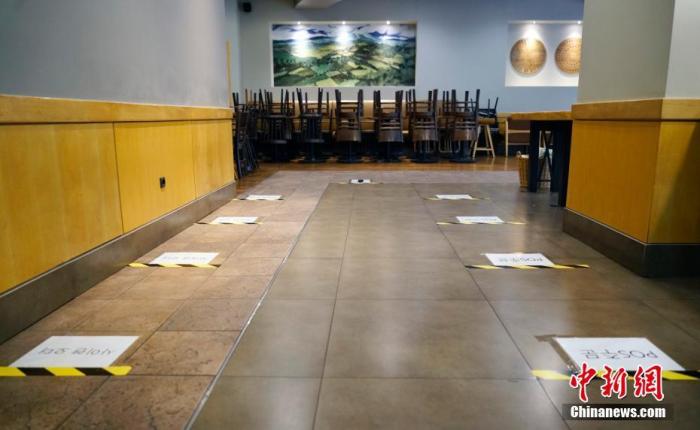China News Service, September 16th, a comprehensive Korean media report, South Korea's Central Anti-epidemic Countermeasures Headquarters announced on the 16th that as of 0:00 that day, South Korea had newly confirmed 113 new cases of new crowns compared to 0:00 the previous day, and a total of 22,504 confirmed cases.
The number of newly diagnosed cases in South Korea in a single day has been less than 200 for two consecutive weeks. Kindergartens, elementary and middle schools in the metropolitan area will resume offline teaching on September 21.
According to reports, 105 of the new cases announced on the 16th were community infections and 8 were imported overseas.
There were no new deaths on that day, and the cumulative number of deaths remained at 367.
On September 1, in a chain cafe in Jongno District, Seoul, South Korea, the tables and chairs were all emptied, and notices were posted on the floor, requiring people waiting for food to be separated by more than 1 meter.
At the end of August, due to the second spread of the epidemic, South Korea suspended offline teaching in all grades except for high school students in the metropolitan area.
As the epidemic has slowed down recently, the South Korean government announced on September 15 that all schools in Seoul, Incheon, and Gyeonggi Province will resume offline teaching from September 21.
However, schools in various regions still need to accept the restrictions of enhanced epidemic prevention measures to minimize school personnel density.
The requirements stipulate that before October 11, kindergartens, elementary schools, and junior high schools need to control the number of returning to school within 1/3 of the total number of students, and high schools within 2/3.
After October 12, localities can formulate plans for returning to school and resuming classes according to the severity of the epidemic.
Before October 11th, areas outside the metropolitan area will also reduce school population density as much as possible in the same way as in the metropolitan area.
However, special education schools, small-scale schools with less than 60 students, and Nongyushan Village schools can continue to negotiate with the local epidemic prevention authorities and school staff to determine student resumption arrangements according to regulations.
The Ministry of Education of South Korea believes that even in areas outside the capital, it is difficult to achieve full offline resumption of classes in a short time.

